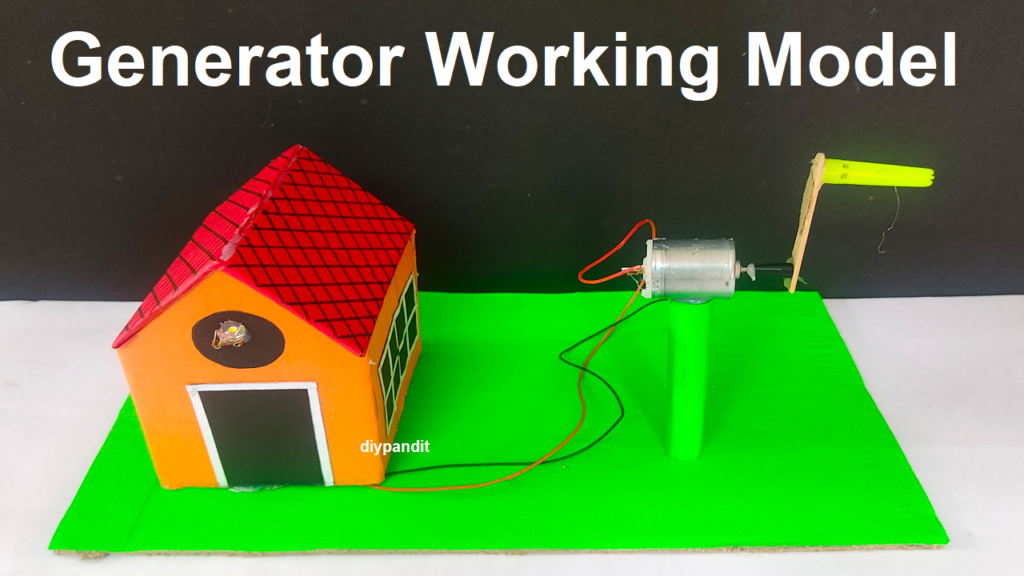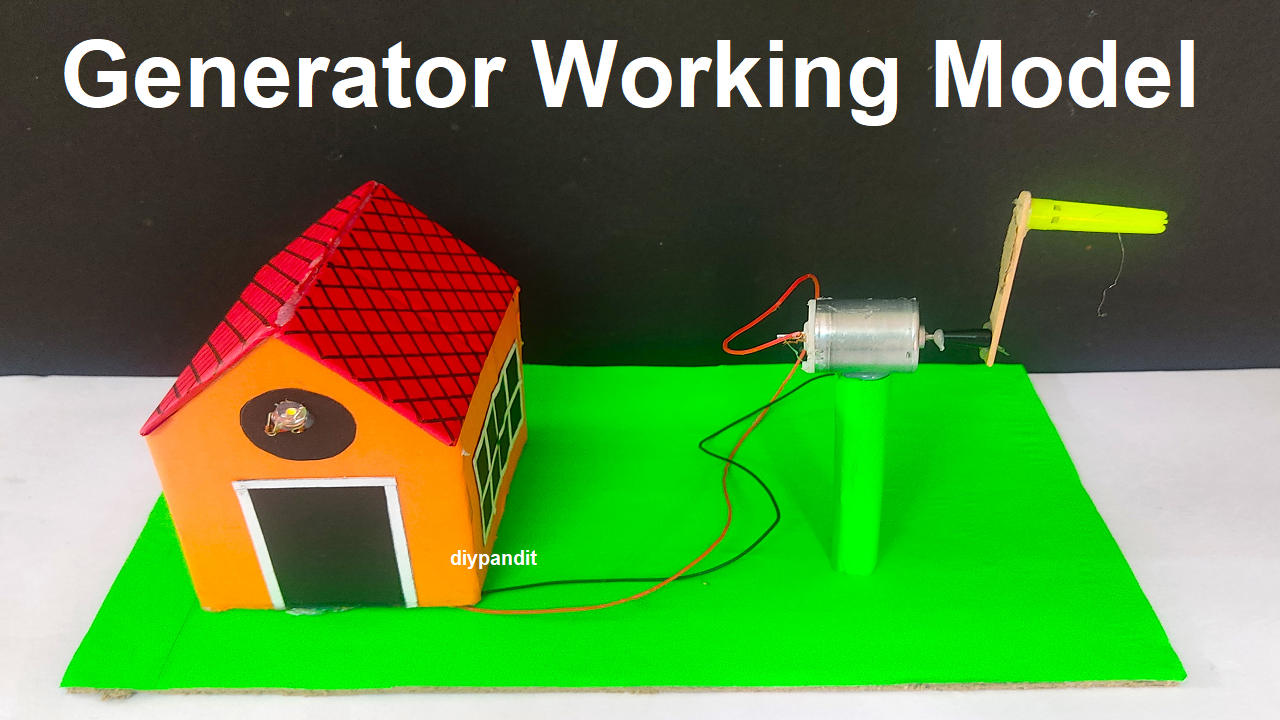Creating a power generator working model for a science project using a small cardboard box, a DC motor, and a DIY crank is an excellent idea.

Here’s a step-by-step guide:
Materials Needed:
- Small cardboard box (for the house representation)
- DC motor
- Wooden dowel or PVC pipe
- Cardboard or wooden base
- Connecting wires
- LED bulb or small light bulb
- Hot glue gun or strong glue
- Paints and brushes (optional for decoration)
Video Steps by Steps on Power Generator:
1. Prepare the Base:
- Start by preparing a sturdy base for your model. You can use a piece of cardboard or wood. This will be the foundation for building the generator.
2. House Representation:
- Use a small cardboard box to represent a house. You can cut out windows and doors and paint the box to make it look like a miniature house.
3. Attach the DC Motor:
- Attach the DC motor to the base. This represents the power generator. Make sure it is securely fixed in place.
4. Create a Crank Mechanism:
- Attach a wooden dowel or PVC pipe to the shaft of the DC motor. This will act as the crank handle.
- If you have small gears, you can attach them to enhance the visual effect and showcase the mechanical aspect.
5. Connect the LED Bulb:
- Connect a small LED bulb or light bulb to the DC motor using connecting wires. This represents the electrical output from the generator.
7. Secure Components:
- Use a hot glue gun or strong glue to secure all components in place. Ensure that the motor, crank, and electrical connections are stable.
8. Decorate:
- Decorate the house and base using paints or other materials to make it visually appealing. You can also use additional cardboard or paper to add details like a roof, chimney, or landscaping.
9. Explanatory Labels:
- Add labels or small signs explaining the different parts of the model, such as “Generator,” “Crank,” and “Electric Output.”
10. Testing:
- Test your model by turning the crank. The rotation of the crank should power the DC motor, lighting up the LED bulb.
11. Display:
- Set up your model on a table or display area during the science exhibition. Ensure that viewers can easily understand how the generator works.
This DIY power generator model not only demonstrates the basic concept of power generation but also allows for creativity in design. It’s an engaging way to showcase the conversion of mechanical energy into electrical energy using a simple, hands-on approach.

